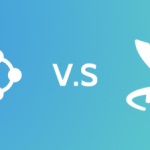Ad Exchange bRealTime Launches Biddr+ for Header Bidding
New service provides a “container” for multiple ad bidders, so a publisher’s site only needs one tag to call it.
bRealTime, a programmatic ad exchange for publishers, is today launching a header bidding service called Biddr+ to help manage multiple ad buyers.
Header bidding is a way for websites to directly take bids from a number of advertisers simultaneously, without having to offer it first to one buyer and then, if no sale is made, to another.
Such “waterfall” bidding can mean the website doesn’t realize the actual value of the available space because the space is sold without all potential buyers having a shot.
In header bidding, a small JavaScript tag in the site’s page header calls the bidding or demand source, like an ad network or exchange.
But, as bRealTime general manager Brian Weigel pointed out, you need a tag for each demand source. The more tags you have, each calling for a bid, the greater the likelihood that the page load will be delayed.
“There are only so many header scripts you can add” before latency kicks in, he said.
This latency is bad news for publishers, who are already battling the growth of ad blocking software, propelled in large part because users are annoyed by the slow loading time of ad-heavy pages.
With Biddr+, the multiple demand sources reside in a “container” on bRealTime’s platform, and the container is called with a single tag. The demand sources submit competing bids, and Biddr+ sends its highest bid to the publisher’s ad server.
Biddr+ integrates with a publisher’s ad server. The container’s winning bid then can compete against, say, the ads that the publisher’s own sales people have directly sold. The winner of this final auction — all of which takes place in fractions of a second — runs the ad in the available page space.
Weigel said that there is no added latency for this process, because the buyers in the container have a publisher-customizable “time out,” which has a default of 500 milliseconds. This means that they have, say, 500 milliseconds to submit their bid, or they don’t participate in the round.
Other ad tech providers are similarly trying to solve the problem of having more bidders without slowing down page load. For instance, Technorati, a publisher ad platform and network, launched a container-based offering called SmartWrapper in July. And there are similar offerings from open source header bidding solutions like Prebid.js.
Weigel told me that one of bRealTime’s differentiators “is that we are offering more managed service solutions” for the publisher, such as backend integration.
He also noted that bRealTime bills “off the publisher ad server counts,” meaning that his company takes the winning price from the ad server’s pricing scheme, instead of what might be conflicting prices coming from the container’s auction. In other words, it’s the price the publisher thinks she’s getting.
bRealTime is a division of global digital media company CPXi. In addition to the new Biddr+, it also offers two other header bidding products: Biddr, which integrates the bRealTime marketplace for competition against the publisher’s demand stack, and a Biddr API, for header bidding integration with regular API protocol.
(Some images used under license from Shutterstock.com.)
Marketing Land – Internet Marketing News, Strategies & Tips
(25)















